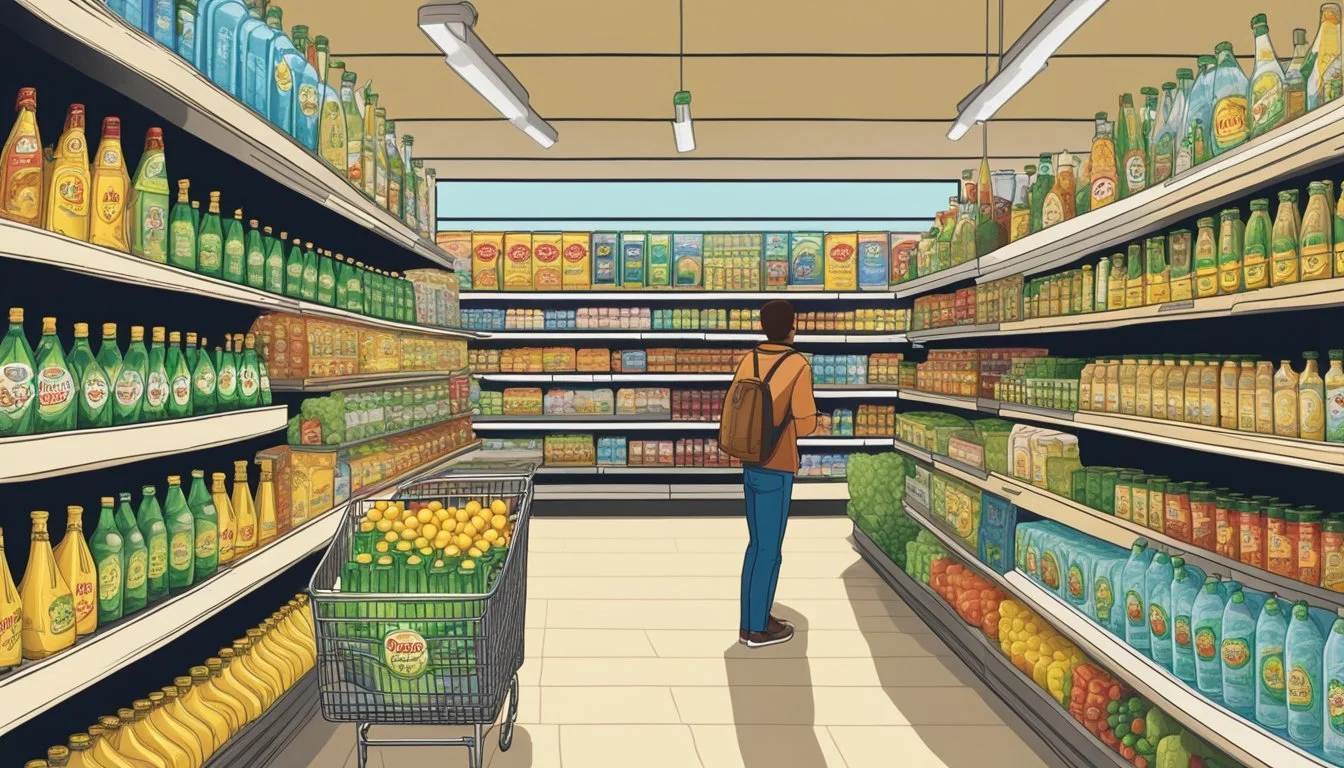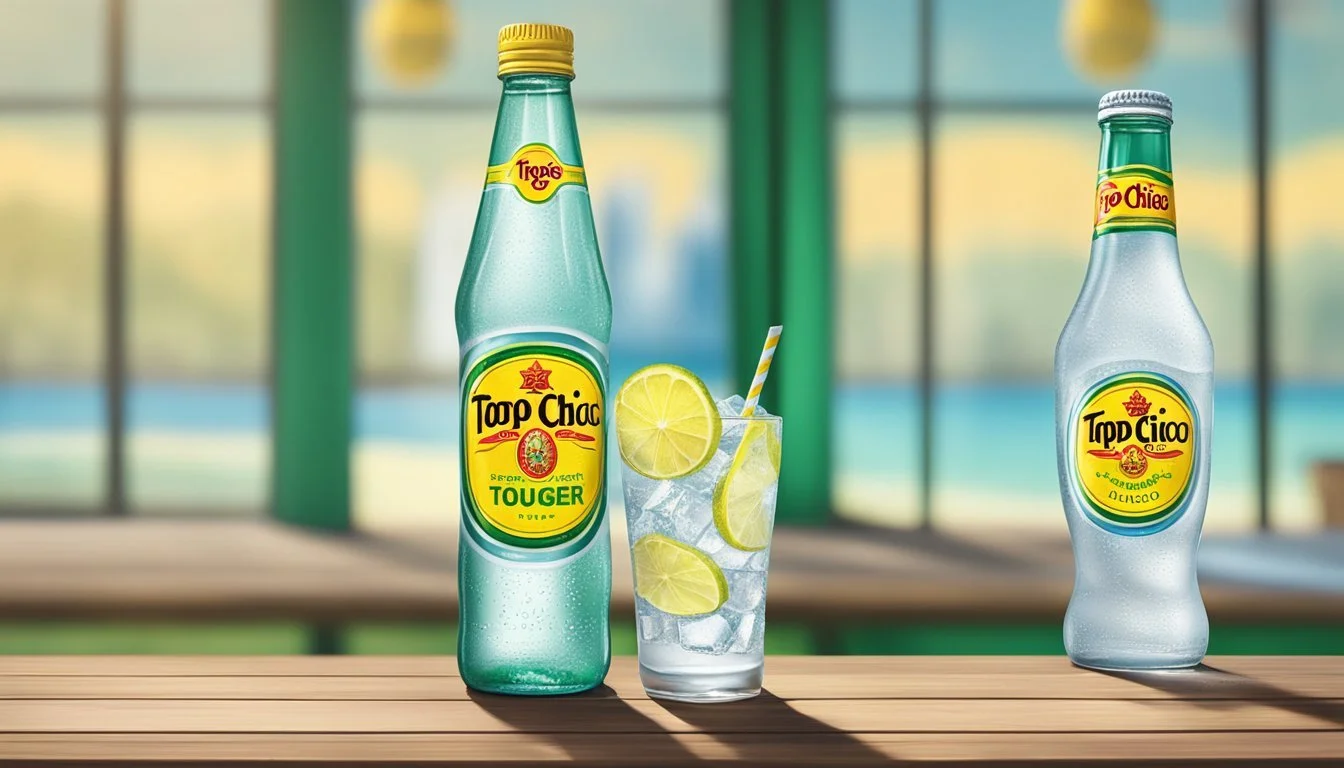Topo Chico vs. Kroger
Which Bottled Water Reigns Supreme?
When it comes to selecting a bottled water, consumers often weigh options like Topo Chico and Kroger. Topo Chico, a sparkling mineral water sourced from the Cerro del Topo Chico spring in Monterrey, Mexico, has been a favorite for its unique taste and effervescence. Over recent years, it faced scrutiny due to the presence of PFAS chemicals, though significant reductions have been reported.
On the other hand, Kroger bottled water is widely available and appreciated for its affordability and accessibility. While not mineral-rich like Topo Chico, Kroger water undergoes rigorous purification processes to ensure safety and taste. Both brands have dedicated followings, but the choice often boils down to personal preference in taste and brand values.
For those who prioritize mineral content and a refreshing fizzy experience, Topo Chico stands out. Meanwhile, shoppers looking for a straightforward, budget-friendly option might lean towards Kroger bottled water. This article will explore the pros and cons of these two popular brands to help you make an informed decision.
History and Background
Topo Chico and Kroger have distinct histories that shape their identities in the bottled water market. Topo Chico’s story is rooted in the mineral-rich springs of Monterrey, Mexico, whereas Kroger’s entry revolves around its diversification in the grocery sector.
Origins of Topo Chico
Topo Chico Mineral Water has been sourced and bottled in Monterrey, Mexico, since 1895. The spring, located at Cerro del Topo Chico, has been prized for its effervescent, mineral-rich waters. Initially popular in northern Mexico and Texas, its reputation spread.
In 2017, The Coca-Cola Company acquired Topo Chico for $220 million, expanding its distribution. The brand's longevity and unique mineral profile make it a standout in the market.
Kroger's Entrance into Bottled Water
Kroger, a major grocery retailer, expanded into bottled water to diversify its product offerings and meet consumer demand. By establishing its own private label, Kroger offers affordable bottled water options.
With various sizes and types, including purified and spring water, Kroger targets everyday consumers looking for convenience and cost-effectiveness. Their widespread retail presence ensures accessibility for many American households.
Comparative Analysis
Topo Chico and Kroger bottled water differ in several key aspects including their water source, purification processes, mineral content, taste, and environmental impact. This breakdown examines each element to help consumers make informed choices.
Water Source and Purification Process
Topo Chico sources its water from a spring in Monterrey, Mexico which has historically attracted attention for its naturally carbonated profile. The water undergoes a purification process that includes multiple stages of filtration to ensure quality.
Kroger bottled water, on the other hand, generally relies on municipal sources. It undergoes purification techniques such as reverse osmosis and UV treatment to meet safety and quality standards set by the FDA and the Environmental Protection Agency.
Mineral Content and Health Benefits
Topo Chico is known for its rich mineral content, including magnesium, calcium, and potassium. These minerals are naturally occurring and contribute to various health benefits such as improved hydration and bone health. The Total Dissolved Solids (TDS) in Topo Chico provide an added taste dimension and potential health advantages.
Kroger's bottled water, being purified, tends to have lower TDS and may lack significant mineral content. Although Kroger enhances its water with added minerals for taste, the overall health benefits might not be as pronounced as those found in naturally sourced mineral waters like Topo Chico.
Taste Profile and Carbonation
Topo Chico has a distinctive taste, largely due to its mineral composition. It is also known for its strong, natural carbonation, which gives it a crisp and refreshing mouthfeel. This makes it a popular choice for those who enjoy sparkling water.
Kroger bottled water comes in still and sparkling varieties. The sparkling water is artificially carbonated and offers a different tasting experience. While it may not have the same robust taste as Topo Chico, it provides a versatile and cost-effective alternative for everyday consumption.
Environmental Impact and Sustainability
When it comes to sustainability, Topo Chico uses glass bottles, which are fully recyclable and tend to have a lower environmental footprint compared to plastic. Coca-Cola, which owns Topo Chico, has also made efforts to reduce the levels of PFAS chemicals in the water.
Kroger bottled water uses PET plastic bottles which are also recyclable but can contribute to plastic waste if not disposed of properly. Both brands take steps to ensure their products meet environmental regulations, but different packaging materials offer distinct advantages and challenges in terms of sustainability.
Health and Safety Standards
Topo Chico and Kroger bottled waters are subject to strict regulatory compliance and ongoing scrutiny for harmful chemicals. Both brands aim to meet or exceed health and safety standards, but they face challenges related to contaminants such as PFAS.
Regulatory Compliance
Both Topo Chico and Kroger follow FDA regulations to ensure their bottled water meets safety standards. These regulations cover aspects such as allowable contaminant levels and production procedures.
Kroger’s bottled water is produced under conditions that meet federal safety and quality standards, ensuring it is safe for consumption. The FDA oversees the bottling processes, imposing limits on contaminants such as microplastics and BPA.
Topo Chico, owned by Coca-Cola, is also compliant with FDA standards. The company has made efforts to improve the quality of its product, ensuring it abides by legal limits. For instance, Coca-Cola has made significant changes to lower the levels of contaminants in its mineral water.
PFAS and Chemical Safety
PFAS (per- and polyfluoroalkyl substances) are of particular concern in bottled water, due to their potential health risks. These chemicals, found in consumer products, can accumulate in the body over time, potentially leading to cancer and other issues.
Tests revealed high PFAS levels in Topo Chico in 2020, but strides were made to cut these levels by more than half by 2021. Despite improvements, the brand still requires attention to ensure even minimal PFAS amounts are minimized due to health concerns.
Kroger bottled water also faces scrutiny over potential contaminants like microplastics. Although the brand has made progress in managing BPA risks by using BPA-free bottles, the issue of PFAS remains. Continuous testing and maintaining total PFAS levels within safe limits is critical for consumer safety.
Market Presence and Consumer Perception
Topo Chico and Kroger bottled waters have significant market presence and are well-known among consumers. Each brand has its own strengths in terms of recognition, loyalty, and feedback.
Brand Recognition and Loyalty
Topo Chico, a sparkling mineral water brand, has a strong presence in the western U.S., particularly in cities such as Austin, Texas. It has gained a loyal following due to its distinctive mineral content and crisp taste.
Kroger, a major supermarket chain, offers a variety of bottled waters under its own label. Kroger's widespread retail presence ensures high availability, but it does not command the same brand loyalty as niche brands like Topo Chico.
Kroger’s bottled water appeals to budget-conscious consumers. It is often seen as a cost-effective alternative to premium sparkling water brands. The loyalty here is driven by affordability and accessibility rather than brand prestige.
Consumer Feedback and Reviews
Consumer Reports has noted that while Topo Chico has reduced PFAS levels in its sparkling water, concerns remain about these substances. Despite this, consumer reviews often praise Topo Chico for its taste and effervescence.
Kroger bottled water receives mixed reviews. Consumers appreciate its low price and reliability, but some critique the taste and packaging compared to more premium offerings.
Brands like LaCroix, Bubly, and Perrier are frequently mentioned in consumer reviews as benchmarks for flavor and quality. Kroger’s performance is typically considered adequate, whereas Topo Chico's unique mineral profile wins it more enthusiastic endorsements.
Packaging and Accessibility
Both Topo Chico and Kroger bottled waters differ in their packaging designs and distribution channels. The materials used in their bottles have significant implications for sustainability and ease of use.
Bottle Design and Materials
Topo Chico uses glass bottles known for their classic design and durability. The use of glass helps maintain the water's carbonation and offers a premium feel.
Kroger bottled water, on the other hand, typically uses plastic bottles. These are lighter and more convenient for on-the-go consumers. With increasing concerns over microplastics and BPA, Kroger has made efforts to offer BPA-free bottles, enhancing safety.
Glass is more recyclable and eco-friendly, whereas plastic offers convenience and lower costs. Consumers prioritizing sustainability might lean towards Topo Chico, while those seeking ease of transport and lower prices might prefer Kroger.
Availability and Distribution Channels
Topo Chico originated in Monterrey, Mexico, and has a strong presence in Latin America and the United States. Available in various grocery stores, restaurants, and also online, it targets a niche market looking for premium bottled water.
Kroger bottled water benefits from the brand's extensive network of supermarkets across the United States. With Kroger being a household name, their bottled water is easily accessible to a large consumer base.
Availability is a key differentiator: Topo Chico's distribution is more specialized, whereas Kroger's widespread availability makes it a go-to option for many. The accessibility of the products can influence consumer choice significantly, catering to different preferences and needs.
Conclusion
Topo Chico and Kroger bottled waters each have their own strengths and weaknesses.
Topo Chico stands out for its refreshing mineral taste and its newfound efforts to reduce PFAS levels. According to Consumer Reports, recent tests show that Topo Chico has significantly cut these levels, demonstrating a commitment to product improvement.
Kroger's bottled water is often praised for being a budget-friendly option. While not as mineral-rich, it provides a reliable source of hydration. It’s widely available and accessible to most consumers.
Taste is a major differentiator. Topo Chico offers a distinct, crisp taste from its mineral content, often preferred for its fizzy texture. Kroger provides a more neutral taste, suitable for those who prefer a less pronounced flavor or use the water for mixing with other beverages.
Health considerations play a role, too. Consumer Reports' findings on PFAS levels in Topo Chico highlight an ongoing concern but also show progress. Kroger water doesn’t highlight significant health claims but remains a straightforward choice for hydration.
Overall value combines taste, availability, health factors, and price. Topo Chico appeals to those who value taste and are willing to pay a premium. Kroger suits budget-conscious consumers seeking reliable hydration.
Topo Chico Kroger Taste Mineral-rich, crisp Neutral Price Higher Affordable Health Reduced PFAS levels Basic health and safety checks Target Sparkling water fans Budget-conscious consumers
Ultimately, the choice depends on personal preferences, priorities, and budget. Both waters offer unique advantages tailored to different consumer needs.





